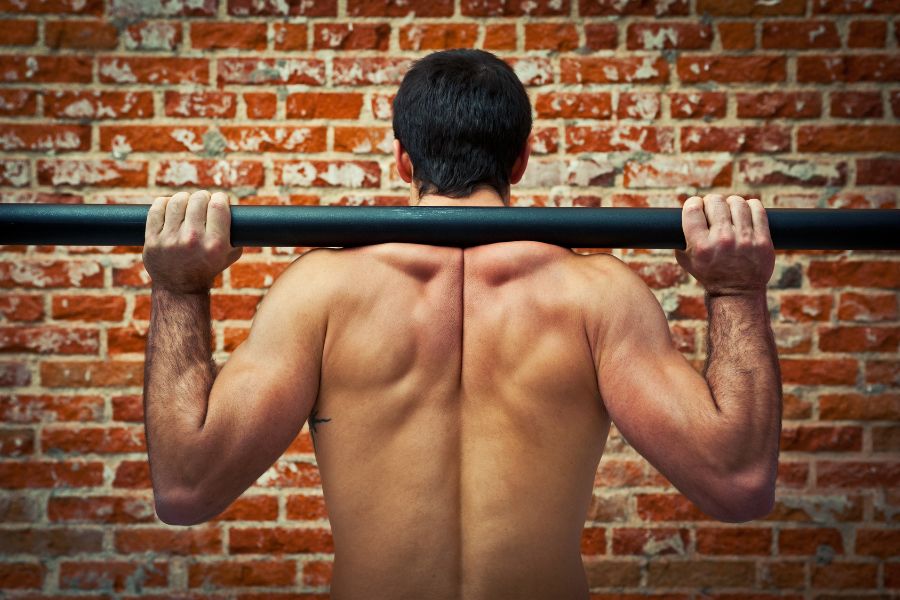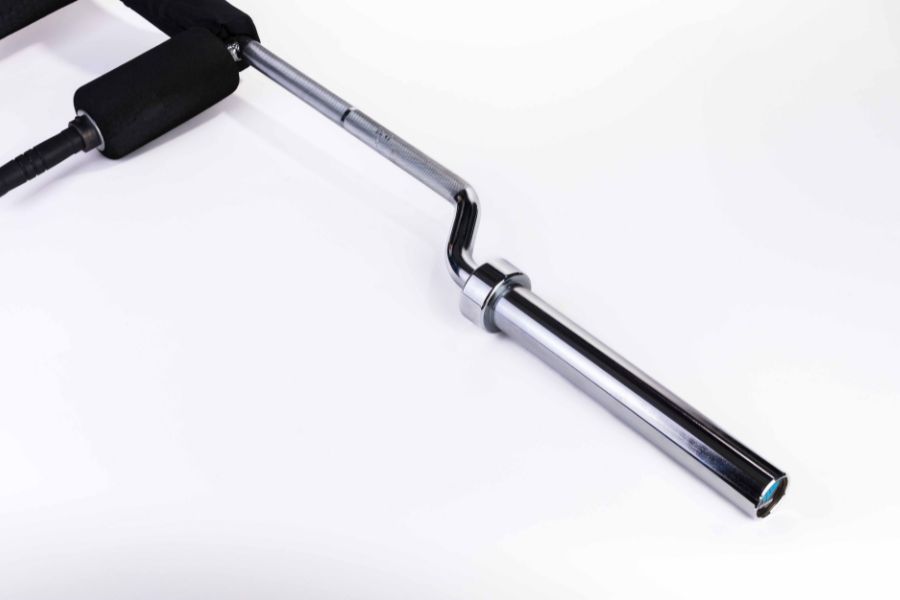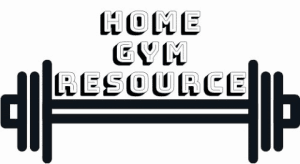No, you’re not going crazy. Barbells come in different diameters and this might be more important than it seems when choosing a bar. Which diameter barbells are out there and which one is the best option for a home or garage gym? Here’s everything you need to know.
Barbells range from 25 mm to 50 mm in thickness. The most common barbell diameter is 28 mm followed by 25 mm. A 28 mm barbell is best as a general-purpose bar for most people. A 25 mm barbell can be better if you’ve got small hands.
In the rest of this article, we’ll go into the different barbells and their diameters, what’s best for a home gym, and why shaft diameter actually matters.
Contents
Are All Barbells The Same Diameter?
No, not all barbells are the same diameter. While there is a standard diameter for most general-purpose barbells used in commercial gyms, there are variations based on the type of barbell and its intended use.
Most general-purpose barbells you can find in commercial and home gyms have a 28 mm diameter. With a few exceptions, barbells are 25-32 mm in diameter.

For example, women’s Olympic, specialty, and powerlifting barbells often have different diameters to suit specific exercises, people, and training goals. The diameter of a barbell can affect grip, hand positioning, and muscle engagement during lifts, making it an important consideration when choosing the right barbell for your fitness routine.
Here is an overview of the different barbell diameters you can commonly encounter.
| Barbell Diameter | Barbell Type | Common Uses |
|---|---|---|
| 28 mm | Most Common Gym Barbell | General fitness, weightlifting |
| 25 mm | Women’s Olympic Barbell | Olympic weightlifting, fitness |
| 28 mm | Men’s Olympic Barbell | Olympic weightlifting, fitness |
| 28-29 mm | IPF Powerlifting Barbell | Powerlifting, strength training |
| 25-30 mm | Generic, Non-Competition Barbells | General Fitness, Short bars |
| 32 mm | Power Squat Barbell | Heavy Squats |
| 30-38 mm | Safety Squat Bar (SSB) | Squats, lower body workouts |
| 48-51 mm | Axle Bar/’Fat’ Bar | Strongman training, grip work |
Just so we’re clear, this only covers the shaft diameter, the part you grip with your hands. The sleeve diameter (part the plates slide on), is generally 50mm thick.
Choosing a barbell diameter isn’t the only choice to make to get a good bar. Here are some other factors you should decide on.
Barbell Diameters
IWF Olympic Barbell Diameter

When talking about Olympic barbells, like the ones used for official competitions, there are actually two types;
- Men’s Olympic Bar: 28 mm shaft
- Women’s Olympic Bar: 25 mm shaft.
The men’s Olympic barbell has a 28 mm thick shaft. The women’s Olympic barbell has a 25 mm thick shaft. This makes the bars easier to grip for the respective competitions.
Standard Barbell Diameter
The standard barbell you see in most gyms is heavily based on the men’s Olympic barbell. That’s why 28 mm is the most common thickness for barbells in both home and commercial gyms.
Some of these bars can be slightly thicker. For example, Rogue makes many of their barbells 28.5 mm thick.
Can you find thinner barbells in a gym? Yeah, 25 mm is not unheard of to have as a standard barbell although nowhere near as common as 28 mm. Thicker barbells are very rare unless they’re specialty barbells. But, most gyms have an EZ curl bar and that’s about as special as it gets.
You can find the best garage gym barbells with 28 mm diameter in this article.
Powerlifting Barbell Diameter

Official IPF powerlifting barbells are once again heavily based on the Olympic men’s bar. However, the diameter can differ slightly.
The official IPF regulations, state that barbells should have a diameter no smaller than 28 mm and no larger than 29 mm.
In practice, most powerlifting barbells are either 28.5 mm or 29 mm thick.
The extra thickness is a bit more comfortable for lifting the heavy weights powerlifting is known for. Also, many high-level powerlifters are just very big humans with big hands so the extra thickness is not a luxury.
Non-competition Barbells
This kind of barbell is a bit weird to classify. What I mean is the type of barbell that isn’t used in any competition or even made to be like such a bar. They are straight and have 2″ sleeves but that’s about where the similarities end.
You’ll have to measure or read the specifications to know exactly which diameter they have. I’ve seen them anywhere from 25 mm – 31 mm thick.
Some of these are quite similar to the men’s or women’s Olympic bars. However, many of them are quite different. Many are shorter yet thicker than the women’s bar. You can also find bars that are about the same size as the men’s bar but with a 30 mm diameter.
Since these barbells don’t have to be certified, the manufacturer can basically do anything they want. If you look on Amazon or another sporting goods store, many barbells will fall into this category.
Specialty Barbells
Specialty barbells are a whole other can of worms. Just like with the generic bars above, there is no standardization so the diameters can vary from model to model.
Fat Bar

The so-called ‘fat’ or ‘axle’ bars are an interesting outlier. They are around 2 inches thick. There is some variation between the different brands but they are all roughly 50 mm /2″ thick.
It’s designed to increase the grip strength needed and engage the forearm muscles more intensely during lifting exercises. The larger diameter of a fat bar requires greater grip strength to hold onto, making exercises more challenging and providing additional benefits for strength and muscle development.
This is generally only used for strongman-style training.
Safety Squat Bar

Safety squat bars (SSB) can have a diameter of anywhere between 30-38 mm. The diameter of the bar itself doesn’t matter that much on a SSB though. That’s because the SSB has thick padding around the bar where it touches your body.
The part you touch on the SSB are the hand grips which are not the shaft of the barbell. The grip diameter is usually around 30 mm but sometimes there are rubber grips on there that make them thicker.
However, the SSB is only used for squatting which is not really a movement where grip strength is important so unlike straight bars, the diameter doesn’t really matter.
Squat Barbell
There are a few special squat barbells that have a 32 mm thick shaft. These bars weigh 25 kg (55 lbs). The main reason why they’re thicker is to decrease the whip. Thicker bars flex less. On the squat, less whip is a benefit.
When you’re under a bar the maximum load you can possibly lift, that little bounce can screw up your whole lift.
These bars usually have knurling on the whole shaft instead of just a few pieces. This provides more grip when the bar is on your back. The thicker diameter also makes the bar a little more comfortable on the back. With 100 pounds on the bar, that doesn’t really matter, with 500+ pounds, it matters a lot.
EZ Curl Bar

Most EZ curl bar shafts have a 28 mm like standard barbells. Some EZ curl bars have a 25mm shaft but that’s a minority.
Grip strength isn’t the most important with a curl bar since they’re generally used for arm isolation exercises where the loads aren’t super high. However, one that fits your hands is still going to be more comfortable and you could get a bit more lower arm hypertrophy out of a thicker bar.
Rogue curl bars have a 28.5 mm diameter like many of their straight barbells.
What’s The Best Diameter Barbell For a Home/Garage Gym?
For a home or garage gym, the best barbell diameter is 28 mm unless you’ve got small hands in which case 25 mm is a better choice.
Most people will be best served by a 28-29 mm barbell. This is the standard diameter for a reason, most people are comfortable with this size.
In a home gym, you’ll often start with a single barbell. That one barbell has to do everything. The 28 mm thick bar is a jack of all trades which makes it the best choice. Later on you can add more barbells with different diameters for specific purposes but you need a versatile bar to start with.
If you’ve got small hands, a 25 mm shaft can be a better choice.
Why Does Barbell Thickness Matter?
Barbell thickness, also known as barbell diameter, matters for several important reasons that can impact your overall lifting experience and performance:
Diameter Effects on Barbell Behavior
The factors above are the impact the barbell’s diameter has on you. However, there are also some ways the thickness of the bar changes the behavior and feel.
Whip
Whip is how much a bar flexes under heavy loads. You can often see this happening with heavy deadlifts or squats. As long as the bar doesn’t bend permanently, it’s not dangerous and on some exercises, it can be beneficial while on other movements you don’t want it. For general fitness, you don’t want a bar with a lot of whip.
Thinner bars tend to have a bit more whip than thicker ones. This is simply because a smaller diameter is less rigid. However, bars can be made with different processes and material composition that changes the whip. So while thickness plays a role in whip, it’s not the only factor.
Strength
Thicker barbells can handle more weight before they bend.
For most people, this is nothing to worry about. If you lift less than +-250 lbs., even the weakest barbells can take that.
As with whip, thickness isn’t the only factor determining how much weight a barbell can handle. Production process, metal composition and quality, and design as also big factors.
A high-quality 25 mm thick barbell can take more weight than a low-quality 28 mm bar. Look at the manufacturer’s specifications and see if a barbell can handle enough weight for your needs.
Bars from well-known brands often don’t mention hard numbers but they generally can handle anything you can put on the sleeves.
Weight
Thinner barbells are lighter. There’s simply less material in them. This is why you often see shorter barbells gaining thickness, they want to keep the weight at a certain number. It’s also a cheap way to make the bar stronger.

